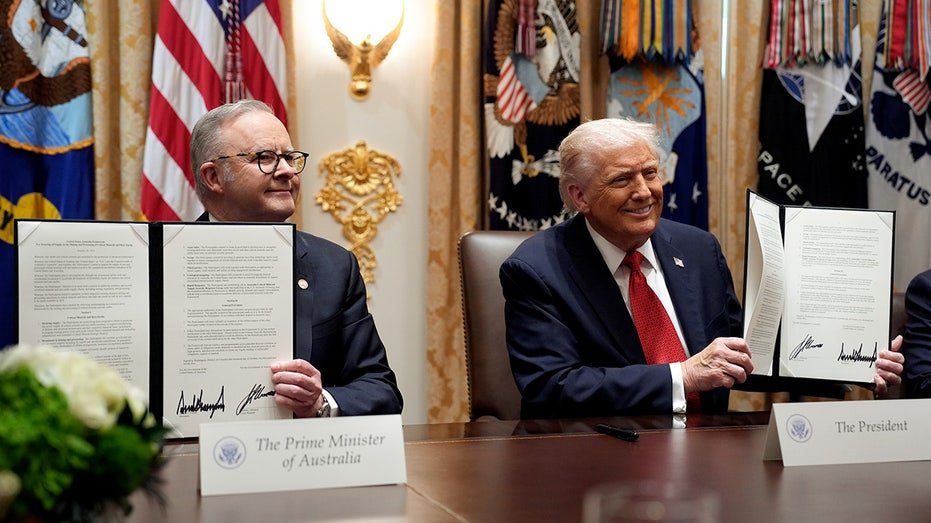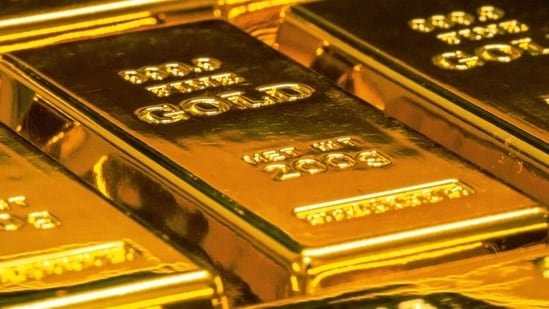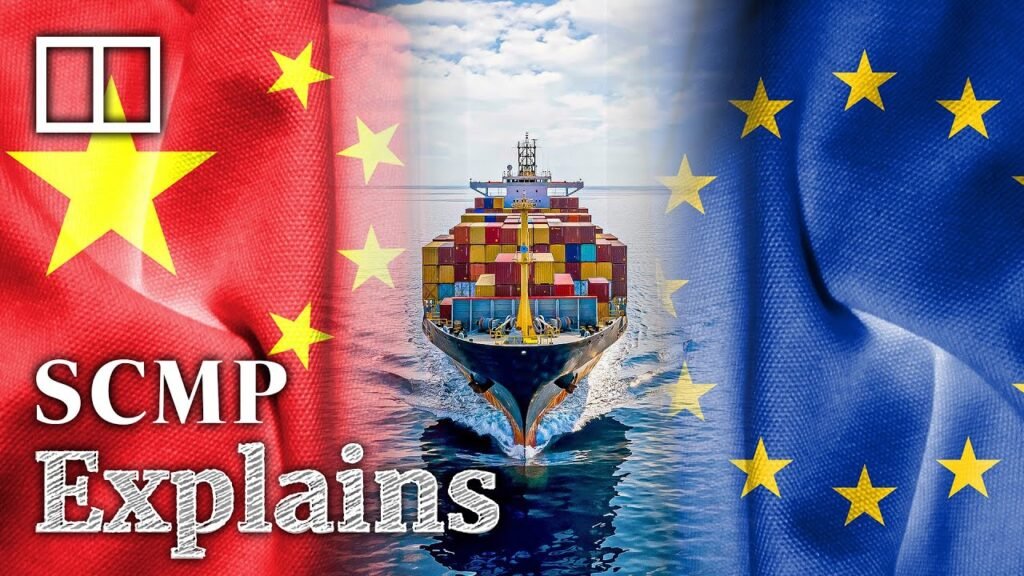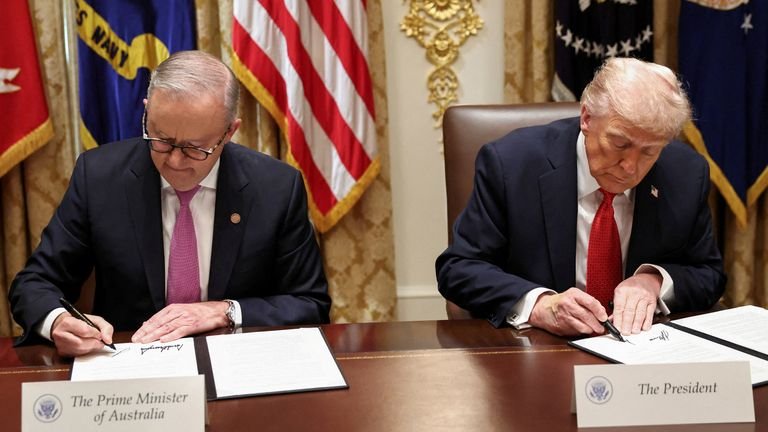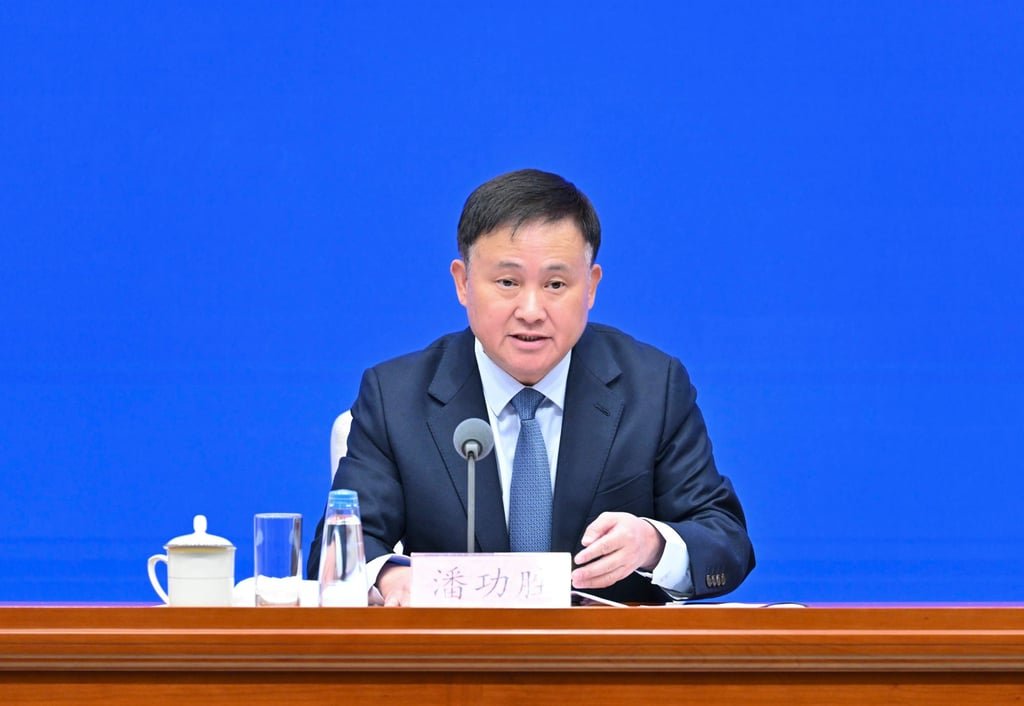As China threatens to restrict the supply of rare earths, the United States and other countries that depend on the critical minerals are scrambling to diversify supply chains and achieve self-sufficiency.
But with even with sustained political will and billions of dollars in investment, breaking China’s dominance over rare earth supplies is likely to take at least a decade, if not longer, according to analysts and industry experts.
Recommended Stories
list of 4 itemsend of list
For countries to reduce their dependence on China, they will have to secure a complex set of supply chains that span mining, processing, metallisation and magnet manufacturing.
The self-sufficiency push faces challenges including high capital costs, gaps in technical expertise and environmental risks.
It also involves chasing a moving target due to the surging demand for the minerals, which are used in everything from smartphones to electric cars and fighter jets.
With “sustained policy and investment momentum,” the US and its allies will likely need 10-15 years to create a supply chain with the “breadth and depth” to support growing demand, said Ryan Castilloux, founder and managing director of Adamas Intelligence.
“The US currently imports around 10,000 tonnes of rare earth magnets annually from China, Europe imports more than 25,000 tonnes,” Castilloux told Al Jazeera.
“In both regions, demand for magnets is growing strongly – these figures will grow by multiples over the next 10 years.”
US President Donald Trump’s administration has undertaken a flurry of activity to boost access to rare earths, including stockpiling supplies, fast-tracking new mining projects in the US, and taking stakes in two Canadian mining companies.
Trump has also courted governments overseas.
Last month, his administration oversaw the signing of an agreement between Missouri-based US Strategic Metals and the Pakistani military’s Frontier Works Organization on the export of the South Asian country’s minerals.
In April, Washington reached a deal with Ukraine under which Kyiv agreed to share the profits of future commodities sales.
In his latest move to shore up supply chains on Monday, Trump and Australian Prime Minister Anthony Albanese signed a pact to invest billions of dollars in rare earth projects in Australia.
Under the latest deal, valued at $8.5bn, the Australian and US governments would be able to take ownership stakes in the projects to guarantee the supply of the critical minerals, which include terbium, yttrium, holmium and erbium.
Though possessing significant reserves of critical minerals, Australia is unlikely to displace China by itself – the country’s reserves are only about one-seventh the size of China’s, according to the US Geological Survey.

Shares in rare earth companies surged on Monday, with the Oklahoma-based miner and processor USA Rare Earth jumping about 14 percent.
Similar initiatives to boost self-reliance are under way in Europe and Asia.
Under the Critical Raw Materials Act adopted last year, the European Union has set ambitious targets for reducing minerals imports, including that 40 percent of its annual consumption be processed within the bloc by 2030.
In September, Europe’s first rare earth magnet facility opened in Narva, Estonia, months after the Solvay processing plant in La Rochelle, France, inaugurated a new production line.
India and Japan, among other major Asian economies, have also moved to shore up domestic supplies and invest in projects outside of China.
“Even with strong political will, the permitting, financing, and technical ramp-up of these complicated projects can’t be sped up too much,” said Ross Chandler, a postdoctoral fellow at Australian National University who studies critical minerals, describing the effort to reduce dependence on China as a “multi-decade process”.
“China dominates midstream separation, refining, and metal-making, and less so the mining,” Chandler told Al Jazeera.
“Building expertise and capacity elsewhere is technically complex, time consuming and capital-intensive.”
For the US and allied countries, the capacity to process minerals presents a more pressing concern than the quantity of deposits in the ground.
While these countries hold an estimated 35-40 percent of global reserves, they only account for about 10-15 percent of refining and processing capacity, said Rahman Daiyan, a senior lecturer at the University of New South Wales School of Minerals and Energy Resources Engineering.
“Post 2030, if all planned projects, recycling initiatives, and stockpile strategies succeed, Western powers could secure the majority of demand,” Daiyan told Al Jazeera.
“While complete decoupling would be complex and strongly dictated by cost and market dynamics, the West can strengthen its position by sharing reserves, capacity and competitiveness through green premiums.”

China has long dominated the supply of rare earths, the result of a sustained state-led investment push that analysts say was unencumbered by the sort of environmental and economic feasibility concerns that would affect similar projects in Western countries.
The country currently accounts for about 70 percent of mining operations and 90 percent of processing, according to the Washington-based Center for Strategic and International Studies.
“China has invested in mines and mineral processes over decades and now controls the raw ores and refining, as well as the downstream manufacturing,” Hayley Channer, a rare earths expert at the United States Studies Centre at the University of Sydney, told Al Jazeera.
“In this way, it has built end-to-end supply chains.”
China’s stranglehold on the minerals, although decades in the making, has taken on new urgency since Beijing earlier this month announced plans to require foreign companies to obtain permission to export Chinese rare earths equipment or material.
Under the export controls set to take effect on December 1, companies anywhere in the world would need a licence to export rare-earth magnets and certain semiconductor materials that contain even trace amounts of minerals sourced from China or produced using Chinese technology.
The announcement, which analysts widely viewed as an attempt to gain leverage in trade talks ahead of Trump’s expected meeting with Chinese President Xi Jinping later this month, prompted alarm among governments and businesses amid fears of looming havoc in global supply chains.

The rules, if fully implemented, would make existing export controls look like a “minor inconvenience,” said Castilloux of Adamas Intelligence.
“Existing supply chain woes, bottlenecks and assembly line disruptions would be amplified manifold,” he said.
Qarrem Kassim, an analyst at the Institute of Strategic and International Studies in Malaysia, said he expected China’s dominance of the sector to continue for “at least a decade”.
“The biggest barrier here is not money, but time and sustained political will,” he told Al Jazeera.
Yet even if the US and its allies reduce their dependence on Chinese rare earths, their broader strategic rivalry with Beijing is unlikely to diminish, Qarrem said.
“Reducing one dependency will not ease tensions – if anything, it may even shift competition to new areas and value chains,” he said.

